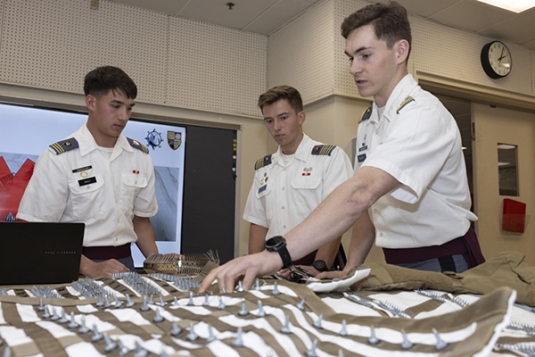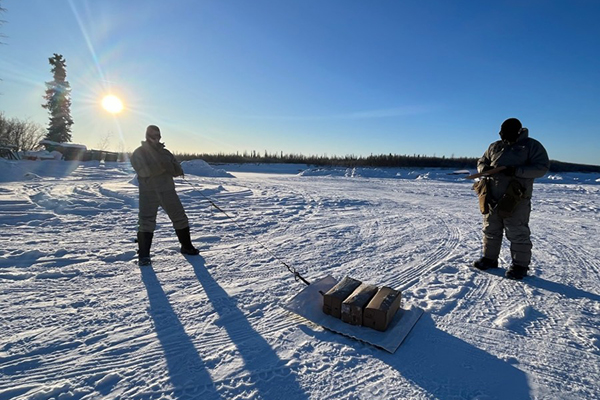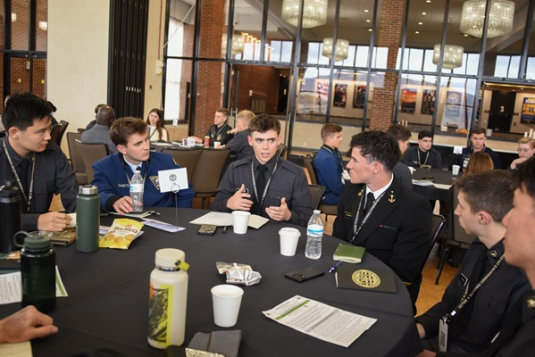All academic departments showcased their firstie cadets’ intellectual prowess and excellence during the 26th annual USMA Projects Day Research Symposium on April 24. One of this year’s highlighted projects was the “All-Terrain Arctic Anchor,” led by the cadet team of Class of 2025 CDTs Christian Bault, Nicholas Buffardi, and Liam McCarthy and advised by Dr. Gregory Freisinger, associate professor in the Department of Civil and Mechanical Engineering. The project is sponsored by DEVCOM Soldier Center in Natick, Massachusetts, with Connie Miles-Patrick and Karen Scagnelli of DEVCOM working to support the group’s needs for positive project results.
This is the second year that capstone project cadets have participated in this endeavor. The purpose of the project is to protect Soldiers if they need medical assistance or have to do maintenance to vehicles in Arctic conditions.
The problem the cadets were looking to solve was developing a device for anchoring a tent in expeditionary Arctic environments. The device needs to be portable, user-friendly, sturdy, serviceable, and cost-effective. The device must be faster than a stake to assemble or anchor while being able to withstand steady winds up to 55 mph and gusts up to 65 mph, and function effectively in temperatures as low as -60 F, on soil, ice or snow.

The cadets began working through the engineering design process this fall, ultimately devising and testing their prototype design in the Arctic. With the problem of figuring out a design that can withstand the extreme nature of arctic conditions, the cadets produced the All-Terrain Arctic Anchor that includes MOLLE Webbing, grommets, a buckle to help wrap up the device, and spikes made from mending plates.
The design of their anchor is meant for an expeditionary CCP Medical Tent, but it is not meant to provide anchoring for long-term shelter. It has different capabilities, such as being buried or kept on the surface, and snow being placed inside the bag. The data they have accumulated will be helpful for the future of the design and any potential modifications. From their conclusions, the anchor is strongest when buried, and the load capacity increases over time. Handling the All-Terrain Arctic Anchor with large gloves was difficult, but the device was effective on varying surfaces. While the cadets also offered changes that can be made for future cadets working on this project, there was one lasting idea of why this project is important.
“The Arctic Anchoring project is great because it is focused on protecting Soldiers in the Arctic,” Buffardi concluded. “There is a major gap currently in our ability to fight in arctic environments, and identifying ways to treat casualties quickly is necessary to improve our capability.”
Cadets develop projects like these through their work in Academic Individual Advanced Development (AIAD) opportunities, research projects, and other academic endeavors—activities that would not be possible without donors supporting the Margin of Excellence at West Point.
The excerpt and images were taken from https://www.army.mil.




